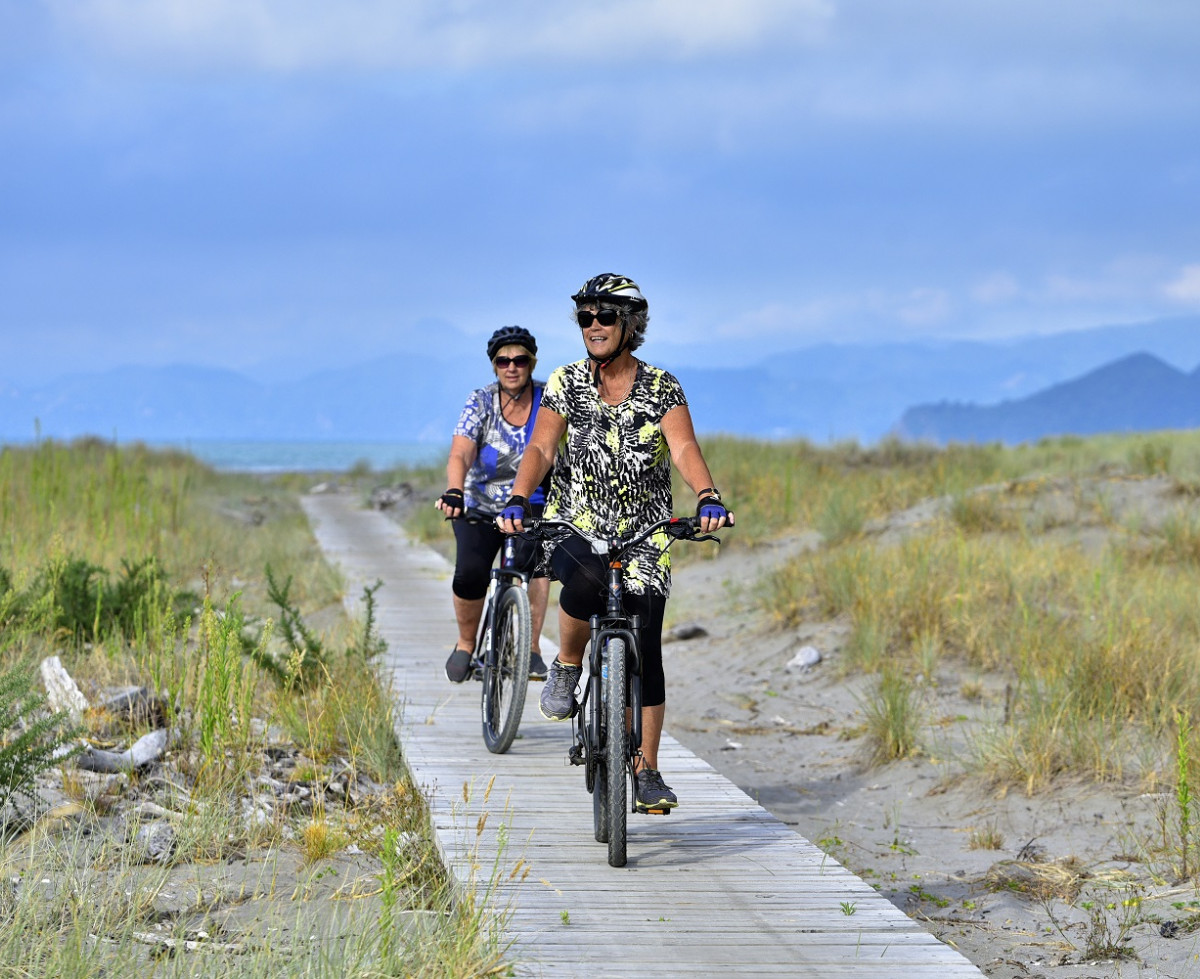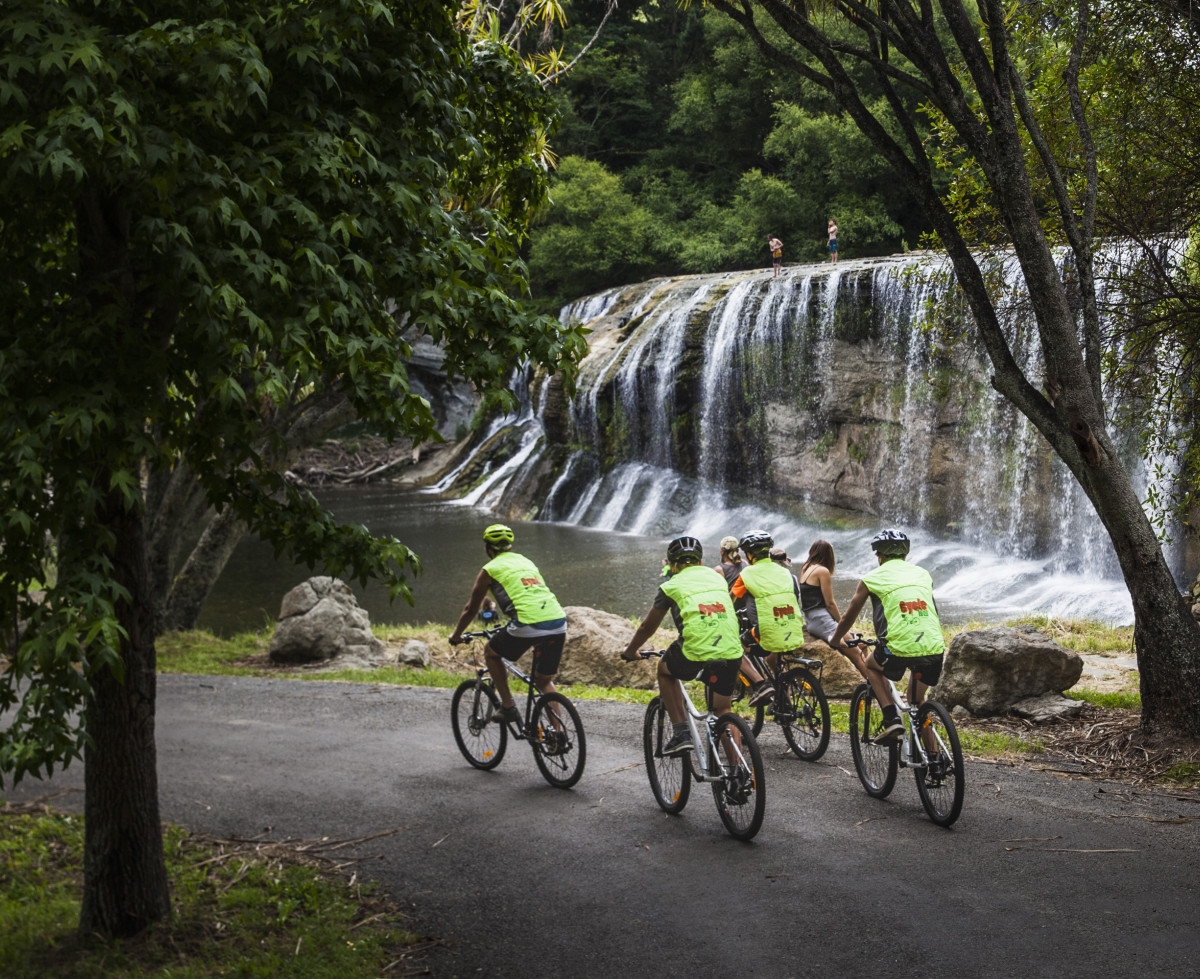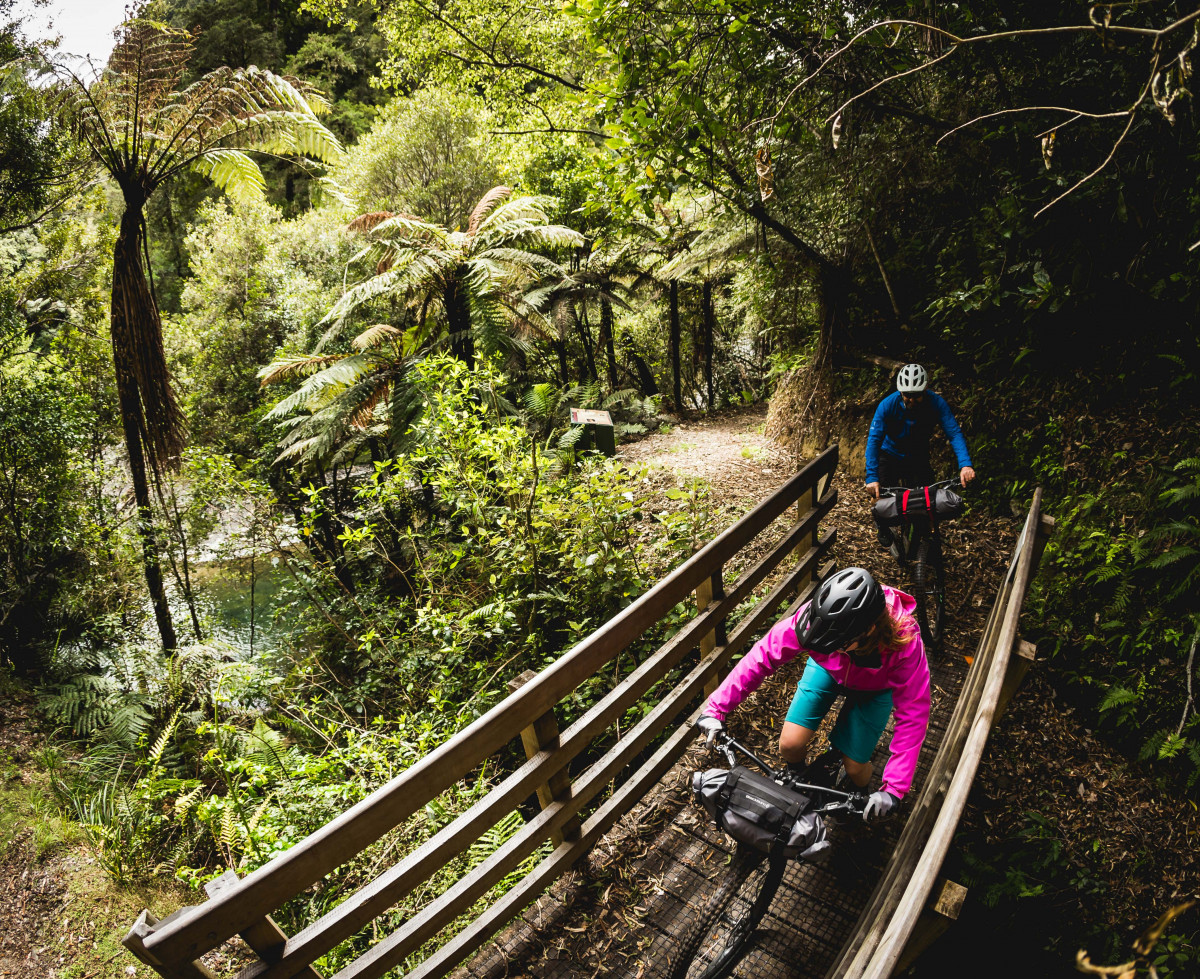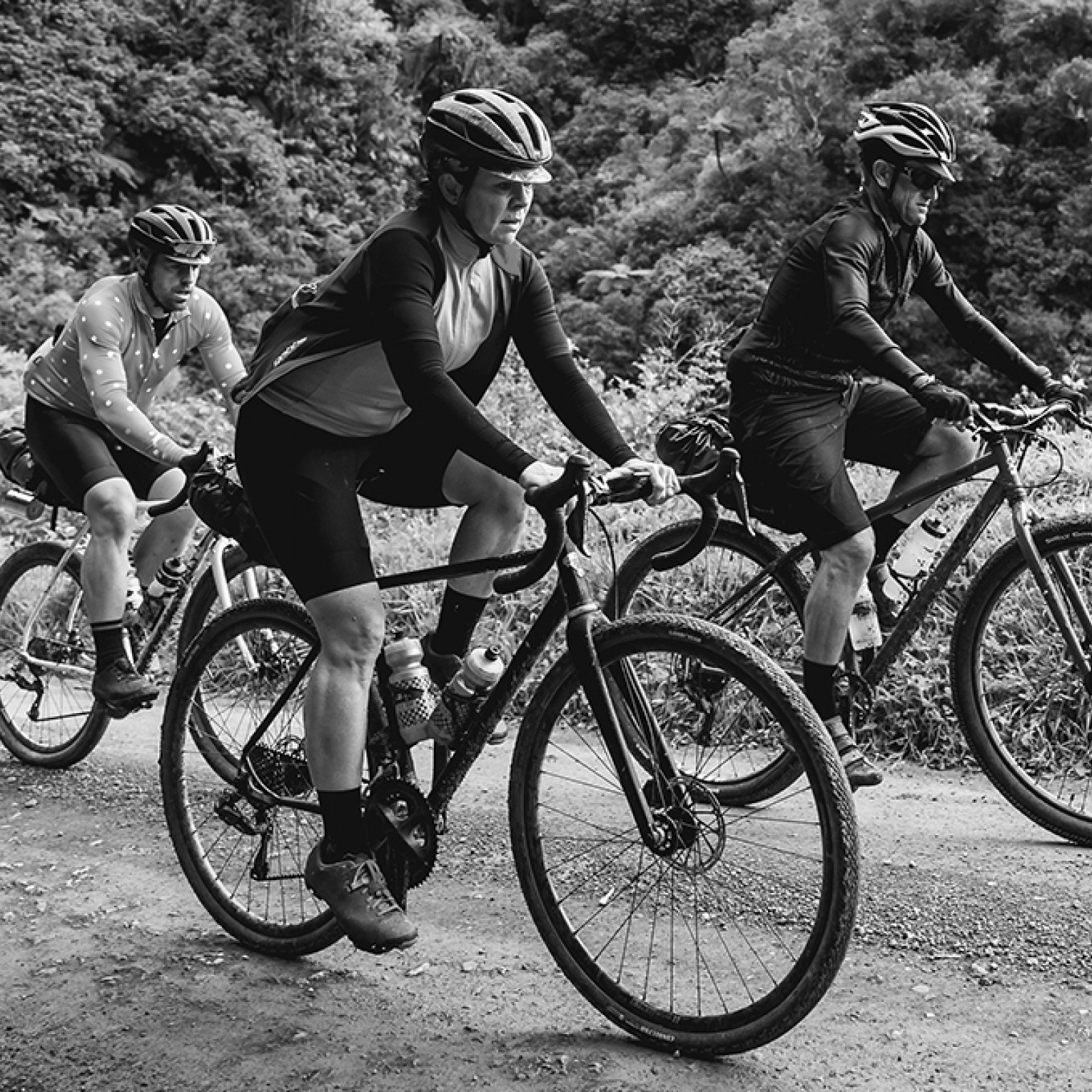Pakihi Track
Pakihi Track
 GradeAdvanced
GradeAdvanced- Time 3-6 hrs
- Distance 20kms
The Pakihi Track was first opened around 1906 as part of a rough track connecting Motu to Opotiki via the Otara Valley. From the early-1990s, it slowly gained a reputation as an epic mountain bike ride. After a massive restoration, the Pakihi Track reopened in 2012 as part of the Motu Trails. Today it's a beautiful journey through lush forest.

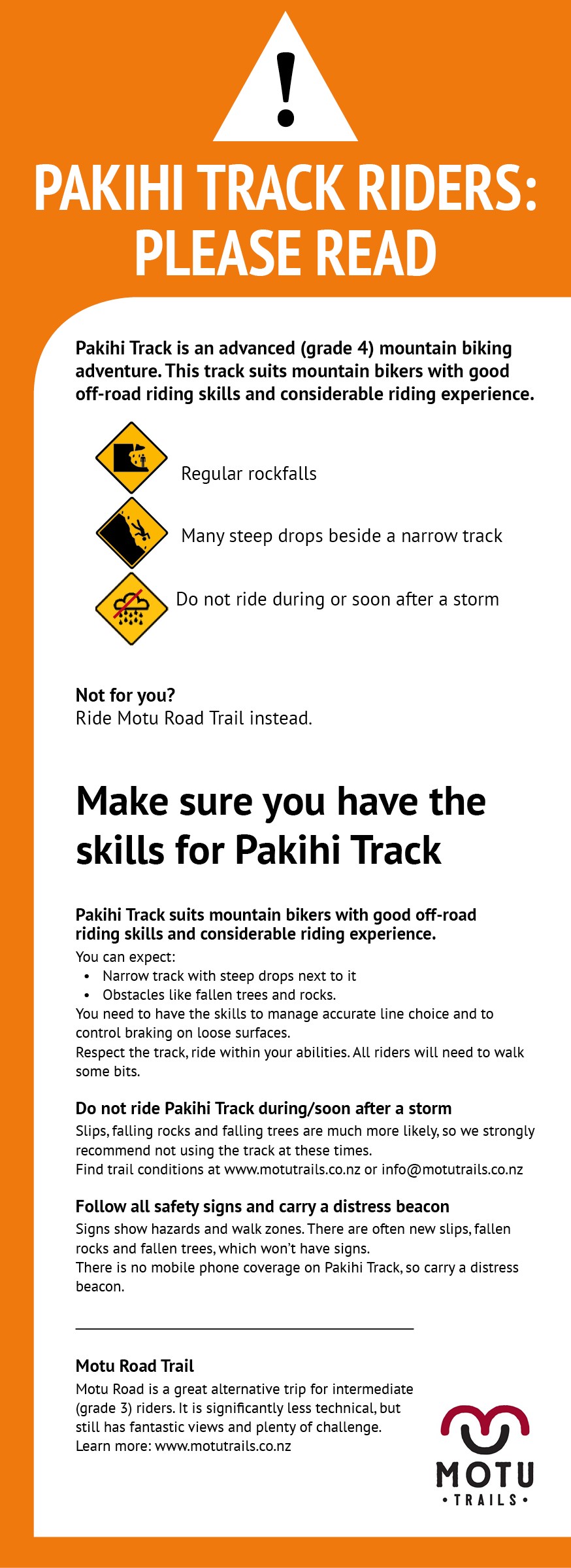
Pakihi Track starts from high on the Motu Road, 17 kilometres from Motu and 38 kilometres from the Ōpōtiki coast. The track is one-way for cycling, from Motu Road to Pakihi Road.
There are no significant uphills and the surface is generally well-formed. However, in places, Pakihi Track is very narrow, with near-vertical drop-offs to the side. There are often fallen trees to lift your bike over. Especially on the lower section, in places, there is almost always rock debris on the track.
You need to have the skills to manage accurate line choice and to control braking on loose surfaces. Respect the track, ride within your abilities. All riders will need to walk some bits.
Pakihi is a back-country track in challenging terrain.
- You need sound bike skills and to take care. At all times, stay focused and your keep speed down. At any stage, if in doubt, get off and walk a section.
- You need to have the skills to manage accurate line choice and to control braking on loose surfaces.
- E-bikers and those with panniers, in several places, you must be able to lift or push your bike.
- Respect the track, ride within your abilities. All riders will need to walk some bits.
Do not ride Pakihi Track during/soon after a storm.
- Slips, falling rocks and falling trees are much more likely. We strongly recommend not using the track at these times. Find latest trail conditions here or email info@motutrails.co.nz
Follow all safety signs and carry a distress beacon
- Signs along the track show hazards and recommended walk zones.
- There are often new slips, fallen rocks and fallen trees, which won’t have signs.
- There is no mobile phone coverage on Pakihi Track, so carry a distress beacon (personal locator beacon).
If you do not have appropriate skills and experience for an advanced (grade 4) track, you may wish to consider riding the Motu Road Trail instead or do the Pakihi as a walk.
If you get a shuttle you will probably be taken to a point high on Motu Road. You'll be dropped near the Onukuroa hilltop above Motu village, or, near the Meremere hilltop in from the Ōpōtiki coast. From the Meremere dropoff, it is 14km to ride to get to Pakihi Track, including a 250 vertical metre, 3.5km long climb. The Onukuroa hill dropoff is significantly easier, with 9km mostly downhill on Motu Road, before the Pakihi Track.
Be sure you confirm your dropoff point with your shuttle provider when you book.
Once you get to Pakihi Track, the top half (11 kilometres) is a steady downhill, descending about 400 vertical metres. A short side track cuts off to the Pakihi hut. This is a great lunch spot and you can stay the night for a true bush experience. There's a basic toilet and access to the gorgeous stream.
After leaving the hut, you reach a swing bridge over the Pakihi stream. Look for the adjacent remains of the original Pakihi bridge, built in 1913/14 and destroyed in 1918.
The scenery is stunning. Take the time to stop. You may see native birds such as kererū, tūī and kārearea, the New Zealand falcon.
At the end of Pakihi Track, there is a shelter, car parking and basic toilet. If you are arranging someone to pick you up, or you are leaving a car here, it is a 30-minute drive from/to Ōpōtiki. Alternatively, from the end of the track, you can ride back to Ōpōtiki via 9 kilometres of the gravel Pakihi Road, then 10 kilometres on the sealed Otara Road. Otara Road has very long straights and can be hard work in a headwind!
If you want a nice alternative route, which is a bit longer and with some gravel and small hills, take Otara East Road and onto Gault road (see map in the Opotiki trails brochure).
Whether you ride back on Otara Road or Otara East Road, when you reach the outskirts of Ōpōtiki, turn onto Te Rere Pa road, and follow the Otara Stopbank Trail for 4 kilometres back to the Pakowhai ki Otutaopuku Bridge and the start of the Dunes Trail.
Pakihi Track is an advanced (grade 4) mountain biking adventure, suiting mountain bikers with good off-road riding skills and considerable riding experience. Before making a decision to ride Pakihi Track, read the safety information carefully. If cycling an advanced-grade track is not for you, Pakihi Track also makes a great walk or run.
The Pakihi Track was first proposed in 1901, because the settlers at Motu needed a route to Ōpōtiki. There was yet no connected Motu Road or Waioeka Gorge Road. The only route at the time was a ‘terrible’ horse track cut in the 1870s by the armed constabulary and other works teams: known as the Ōpōtiki and Ormond Road (or Ormond and Ōpōtiki Road) and later the Military Track, it was neglected, twisting and dangerous. Before then, there had been only Te Kowhai Track, which was the original Māori trail that crossed the ranges.
To the settlers in 1901, a route down the Pakihi and Otara Valleys seemed the best bet – and after years of discussion and surveying, in about 1906 they finally began the incredibly hard work of cutting and benching by spade, explosive, and horse to create a track through the steep valleys.
In 1914 the Pakihi Track was completed, after the installation of the suspension bridge over the Pakihi stream (in this year the Motu Road became fully operational too). The track was used for stock movement and horse journeys. But in 1918 a terrible storm wrecked the bridge and track. Because by now vehicles could use the Motu Road, Pakihi Track was not repaired, and this was the end of the track for many years – despite local Otara Valley farmers lobbying for it to be reopened so that they could send their stock to Gisborne.
In the 1960s, the Pakihi Track gained a conservation/recreation focus. In 1969 the New Zealand Forest Service (now Department of Conservation) built a hut halfway down the valley for hunters and walkers. Then in the 1990s, intrepid cyclists started using the track as the ultimate adventure ride, heaving their bikes over fallen trees and gingerly along cliffs. From the mid-1990s Pakihi was noted in Classic New Zealand Mountain Bike rides. Unfortunately, after a 2007 storm, the track got even more rugged!
With the advent of Ngā Haerenga, New Zealand Cycle Trails, in 2010-2012, DOC restored the Pakihi Track to become part of the Motu Trails Cycleway, officially opened in 2012. Restoration included installing a 32-metre suspension bridge over the Pakihi Stream. The track, with its steep valleys and loose rock, is constantly in need of maintenance. However, the experience of single track riding through the remote country like this is unforgettable, and makes all the hard work worth it!
For riding, Pakihi Track is one-way only, from Motu Road. Do NOT ride up from Pakihi road end. Walking or running, you can go both directions. Always be prepared to meet other trail users and track workers, and pass with care.
If you're an experienced rider with sound skills, the Pakihi Track is a gem. Please be very clear, however:
Pakihi Track is an advanced grade (grade 4 track) that suits mountain bikers with good off-road riding skills and considerable riding experience. You need to have the skills to manage accurate line choice and to control braking on loose surfaces. Be sure you read the safety information and only ride Pakihi Track if you have appropriate skills and experience.
We strongly recommend you take standard safety gear for backcountry riding:
- Spare tubes (if you run tubeless still take a tube) and basic tool kit
- Emergency foil sleeping bag
- Rain jacket and warm spare clothing
- Basic first aid kit
- Distress beacon (personal locator beacon). These can be hired from Ōpōtiki i-SITE and Cycle Gisborne.
